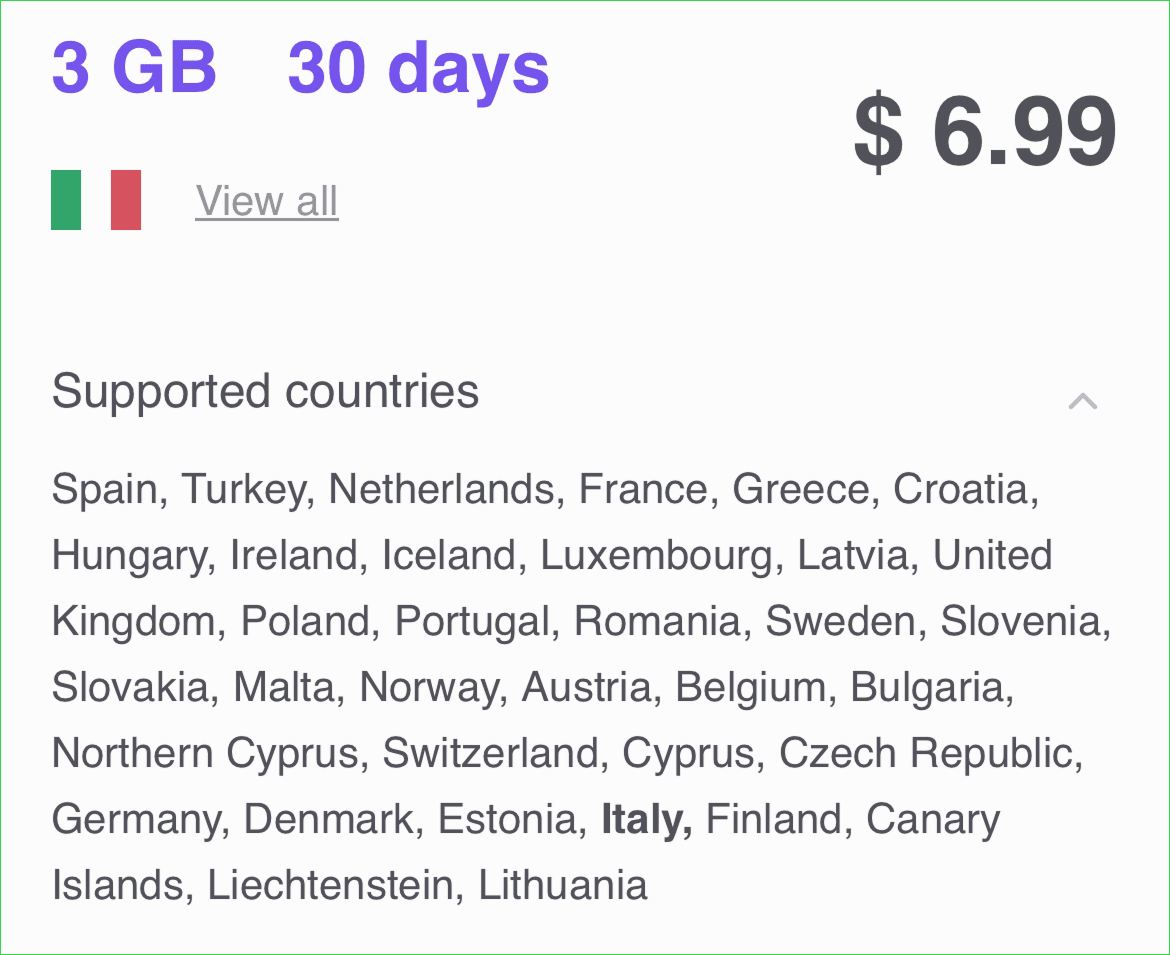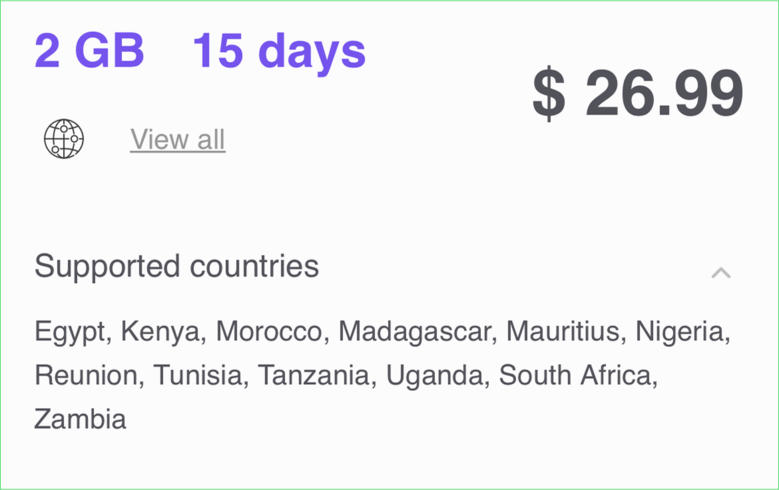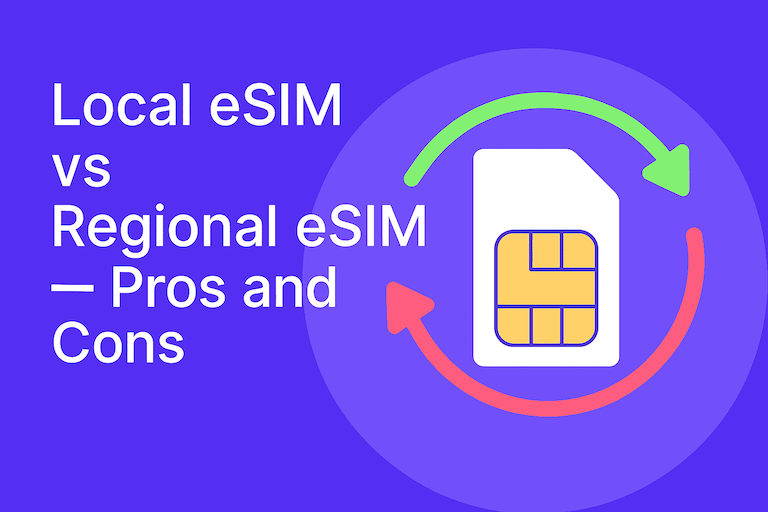Some of the most popular choices among travelers are local and regional travel eSIMs – but what's the difference? Local eSIMs allow access to networks in a single country (e.g. Germany, Canada, or Thailand), while regional eSIMs offer mobile data across an entire region, such as Europe, the Caribbean, or Asia. Let’s break down the pros and cons of each and help you decide when it makes more sense to go with a local plan – and when a regional eSIM is the smarter choice.
Local Travel eSIMs: Pros and Cons
They're the top choice for many travelers – on our TooSIM website, you'll find local eSIM plans for over 200+ countries. Here's why this option is so widely used:
- - The most affordable travel eSIM. Local plans are typically cheaper than regional or global ones. For instance, a 50 GB plan for Italy (30 days) costs just $47.99, while a regional eSIM that includes Italy starts at $60.99 for the same amount of data.
- - Perfect if you're visiting just one country. You don’t need to pay for coverage in surrounding countries if you're not going there – it's unnecessary and more expensive.
- - Reliable, high-speed internet. You’ll get strong coverage with 4G or even 5G in many locations – not just 3G. These eSIMs typically work through direct partnerships with local mobile operators, ensuring better performance and stability.
Cons:
- - If you’re visiting more than one country, you’ll need to purchase a separate eSIM for each destination.
- - Less flexibility – if plans change and you cross the border, your local eSIM won’t work in the new country without switching plans.
Regional Travel eSIMs: Pros and Cons
Regional eSIMs are a popular choice for active travelers who want to explore multiple countries within a region, rather than staying in just one. Here are the main advantages:

- - One virtual SIM provides coverage throughout an entire region. For example, a European plan grants access to mobile networks in 36 countries.
- - Ideal for cruises and multi-country trips. More budget-friendly and convenient than buying separate eSIMs for each country.
- - Save time and effort – no need to buy a new plan each time you cross a border.
- - Maximum flexibility – change travel plans on the go without losing internet access.
Cons:
- - Typically more expensive than local eSIMs.
- - Sometimes less stable or slower data speeds compared to local options.

Important: Always check the list of supported destinations before purchasing. For example, the Africa plan may include only 13 countries, so some destinations might not be covered.
In that case, it's often better to activate separate local eSIMs for shorter periods – for example, 7 days in one country, then another 7 days in the next.
Conclusions
If you're certain you'll be staying in just one country and prioritize the most stable, high-speed internet, a local eSIM is your best bet. However, if you’re planning to visit multiple countries, need maximum flexibility, or are going on a cruise, a regional option will be more convenient and cost-effective.
Want to learn how to cut costs even more while staying connected abroad? Check out our guide on how to save money on international data roaming with eSIM plans.
